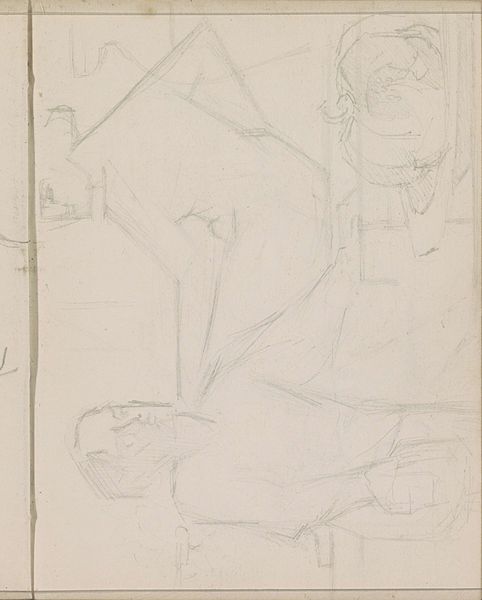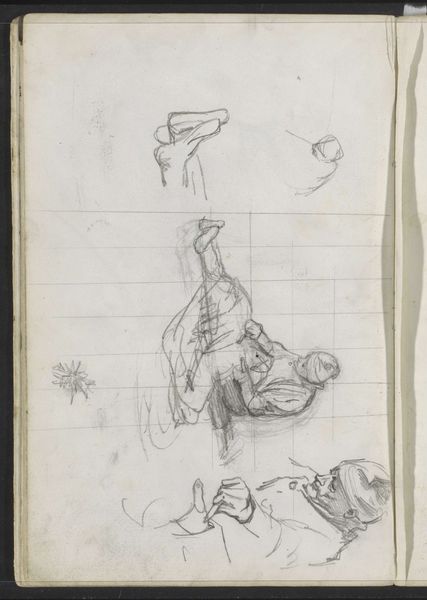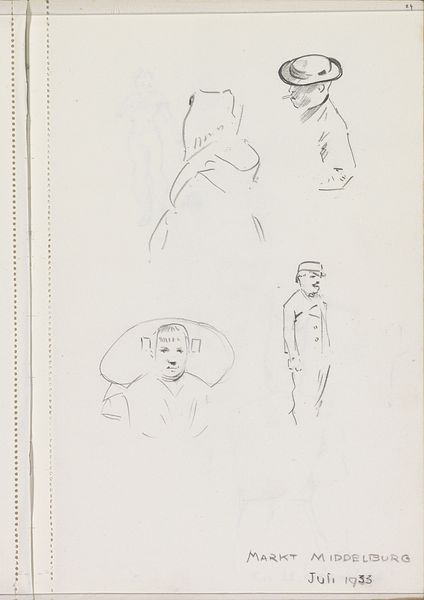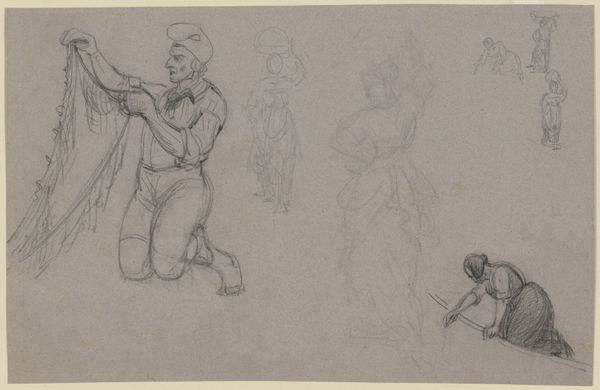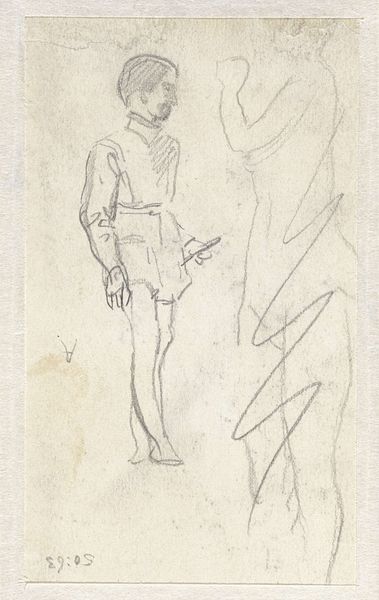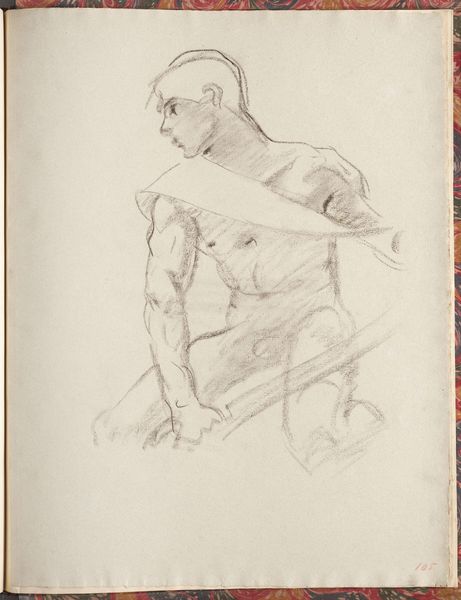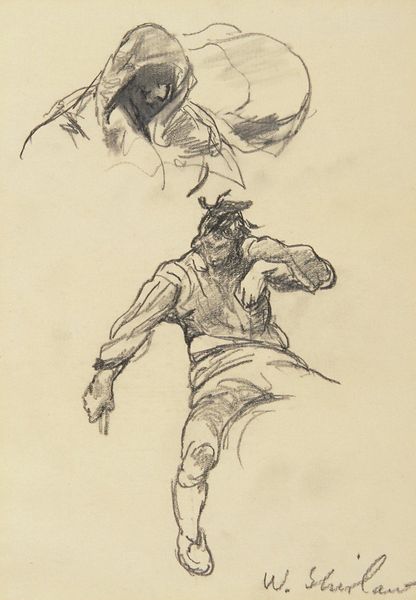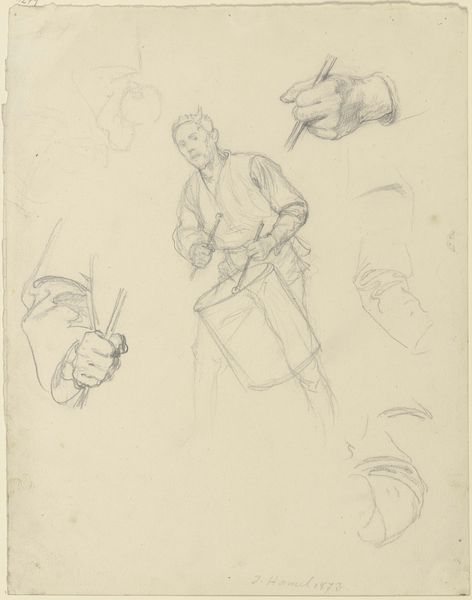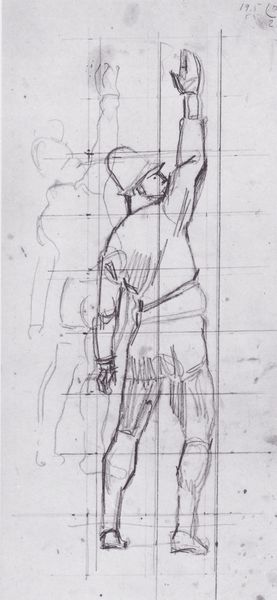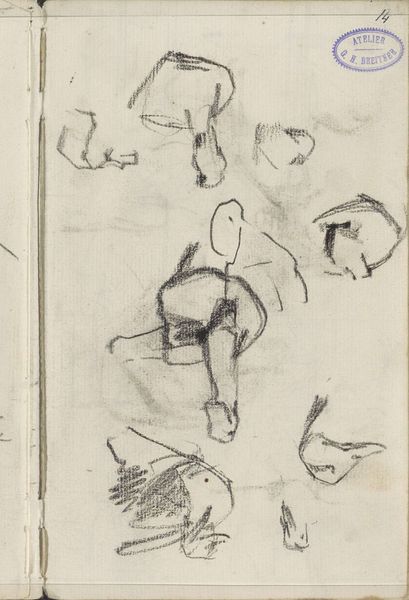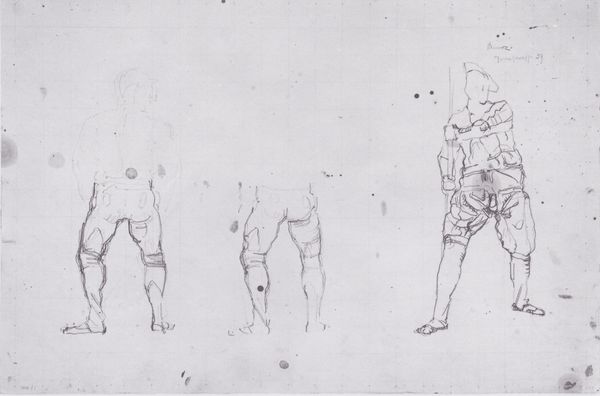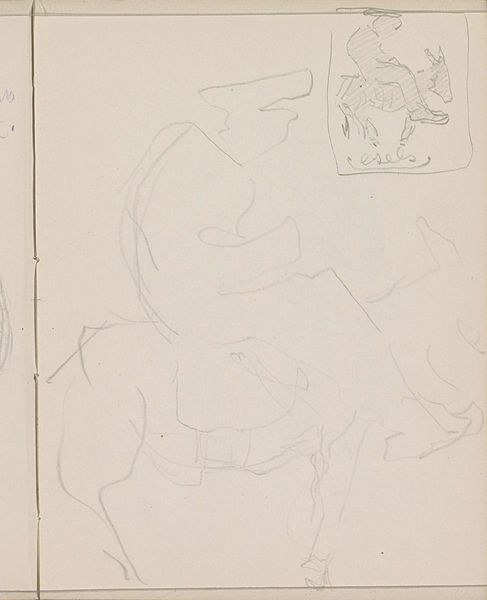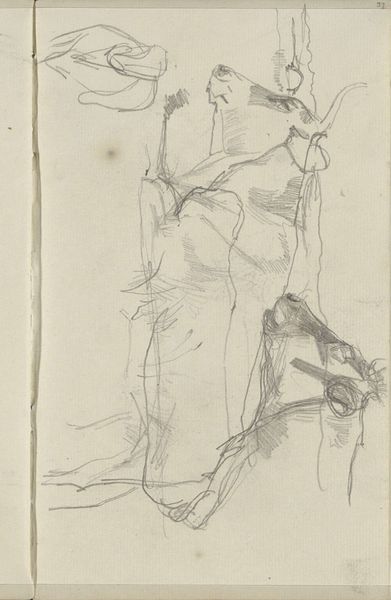
drawing, pencil
#
portrait
#
drawing
#
pencil
#
academic-art
Dimensions: 345 mm (height) x 212 mm (width) (bladmaal)
Editor: This is "Modelstudie, studier af hænder og hoved," a pencil drawing by Niels Skovgaard, dating from around 1897 to 1900. There’s something so immediate about these studies, a focus on capturing form, particularly of the hands. How do you interpret this work within its historical context? Curator: Considering Skovgaard's time, we're in an era defined by academic art traditions. The emphasis on anatomical study and the human form, especially in sketches like this, reinforces the rigorous training artists underwent. Can you see how this pursuit of academic excellence, often commissioned by powerful institutions, dictates what imagery is valued and shown publicly? Editor: Definitely. The figure studies, the hand gestures—they speak to a certain power dynamic in how the male form was depicted and consumed. But isn’t there also something rebellious in a *study* remaining a study, outside the gallery setting? Curator: Precisely! These "backstage" glimpses humanize artistic mastery. But let’s also remember who has the privilege to even engage in this sort of private study. The social status to procure materials and models shapes the *entire* historical narrative. What purpose do you think those gridlines visible across the sketch fulfill? Editor: I think they’re useful in accurately transferring a drawing from one surface to another, hinting at Skovgaard’s intent of possibly scaling this to a painting, but it ultimately challenges the very idea of what "finish" truly means in a drawing. Curator: Yes, the grid reveals how Skovgaard meticulously constructed this artwork and indicates an interesting dialogue that goes on even now around our current notions of artistic practices and what artwork enters the public domain through exhibition. Editor: I hadn't thought of it quite that way. Thanks for spotlighting the historical layers influencing its display now. Curator: My pleasure! Thinking about the art in terms of who makes it and how it gets seen can teach us a lot about broader societal forces.
Comments
No comments
Be the first to comment and join the conversation on the ultimate creative platform.
